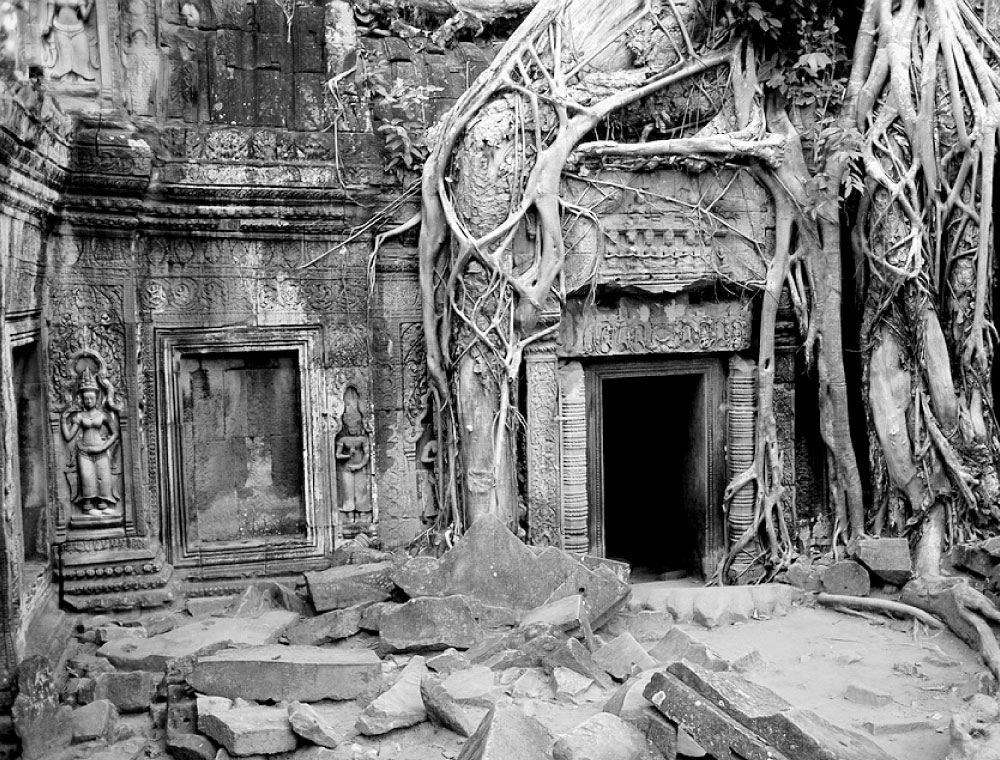PHNOM CHISO
At the top of Phnom Chisor are some very nicely preserved 10th or 11th century A.D. Angkorian era ruins. The temple was constructed under King Suryavarman I during a period when the Angkorian Empire was powerful with continued development. As most Angkorian temples of the period, this Hindu temple was dedicated to Shiva and Vishnu. Visible scenes including Brahma, Shiva and Visnu were carved on some lintels and pediments. The 503 steps to the temple on the hilltop make for a fairly vigorous climb, but the quality of the ruins and the amazing views of the countryside make the effort worthwhile.
ANGKOR BOREI
Angkor Borei is a town in Takeo Province accommodating several ruins and archaeological digs. The area has been continuously inhabited for at least 2,500 years and has yielded artefacts dating back to the Neolithic period, the Funan period (4th or 5th century A.D.) and Chenla (8th century A.D.) as well as the later Angkorian period (9th to 15th century A.D.). There are no significant temple ruins at Angkor Borei but there is an interesting little museum displaying artefacts from the area and providing information on recent archaeological digs.
PHNOM DA
About 20km from Angkor Borei is the hill of Phnom Da, crowned by an impressive 11th century Angkorian-era prasat (tower) with some carvings in good condition. The temple was constructed under King Rudravarman and dedicated to Shiva. Further down the hill is the unique little temple ruin Ashram Maha Rosei that provides a quite striking contrast to other Khmer monuments in both decoration and design.
PRASAT NEANG KHMAO
Standing next to an active pagoda, Prasat Neang Khmau consists of two deteriorating brick prasats (towers) built in the Angkorian-era in the 10th century A.D. under King Jayavarman IV. There was probably at least one more ancient prasat where the modern pagoda currently stands. Prasat Neang Khmau was originally dedicated to the Hindu God Shiva. The temple complex is named after Neang Khmau, “Black Lady”; and her modern-era statue is located in front of the temples.
TONLE BATI
The small lake of Tonle Bati is a popular picnic spot with bamboo stands and mats by the water for the locals. On the road to Tonle Bati are two Angkorian era temples, “Ta Prohm” and “Yeay Peau”. Both temples were built under Jayavarman VII in the late 12th century during the same period that Bayon and Angkor Thom in Siem Reap were constructed. Ta Prohm, the more extensive and impressive of the two, displays a number of very well-preserved carvings. Yeay Peau is a single sandstone tower situated adjacent to an active pagoda which displays some carvings. The area has been occupied since the pre-Angkorian Funan period and Ta Prohm was modified and extended as late as the 16th century.
PHNOM TAMAO
The Phnom Tamao area, a popular destination for weekend holidayers from Phnom Penh, offers picnicking areas, a zoo and some minor Angkorian-era ruins. The Ta Khmau Zoological Gardens is Cambodia’s newest and best zoo displaying a variety of animals including lions; tigers; bears; birds; and many more. An 11th century, Suryavarman I temple ruin in very poor condition (Prasat Tamao) sits at the top of Phnom Tamao.
